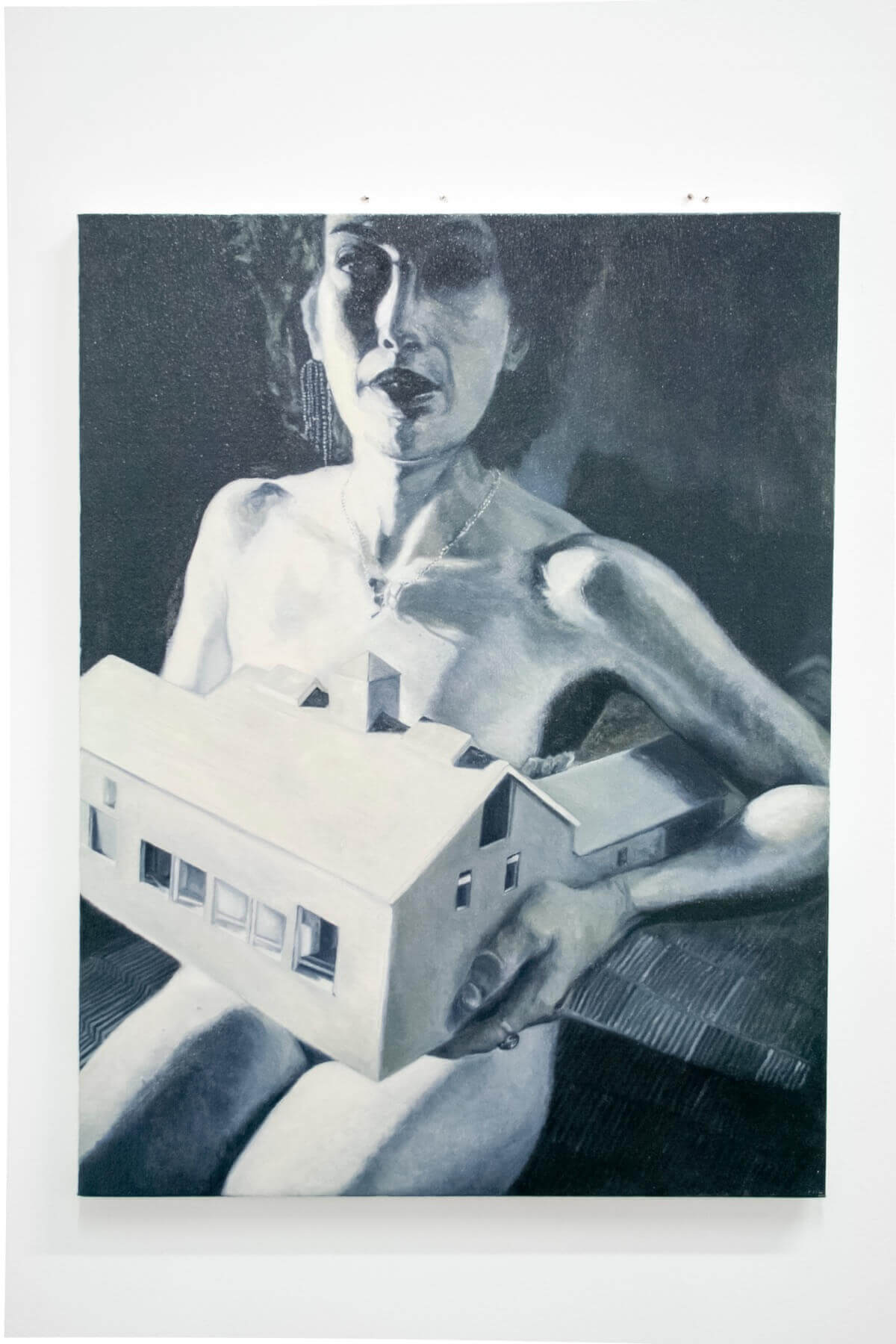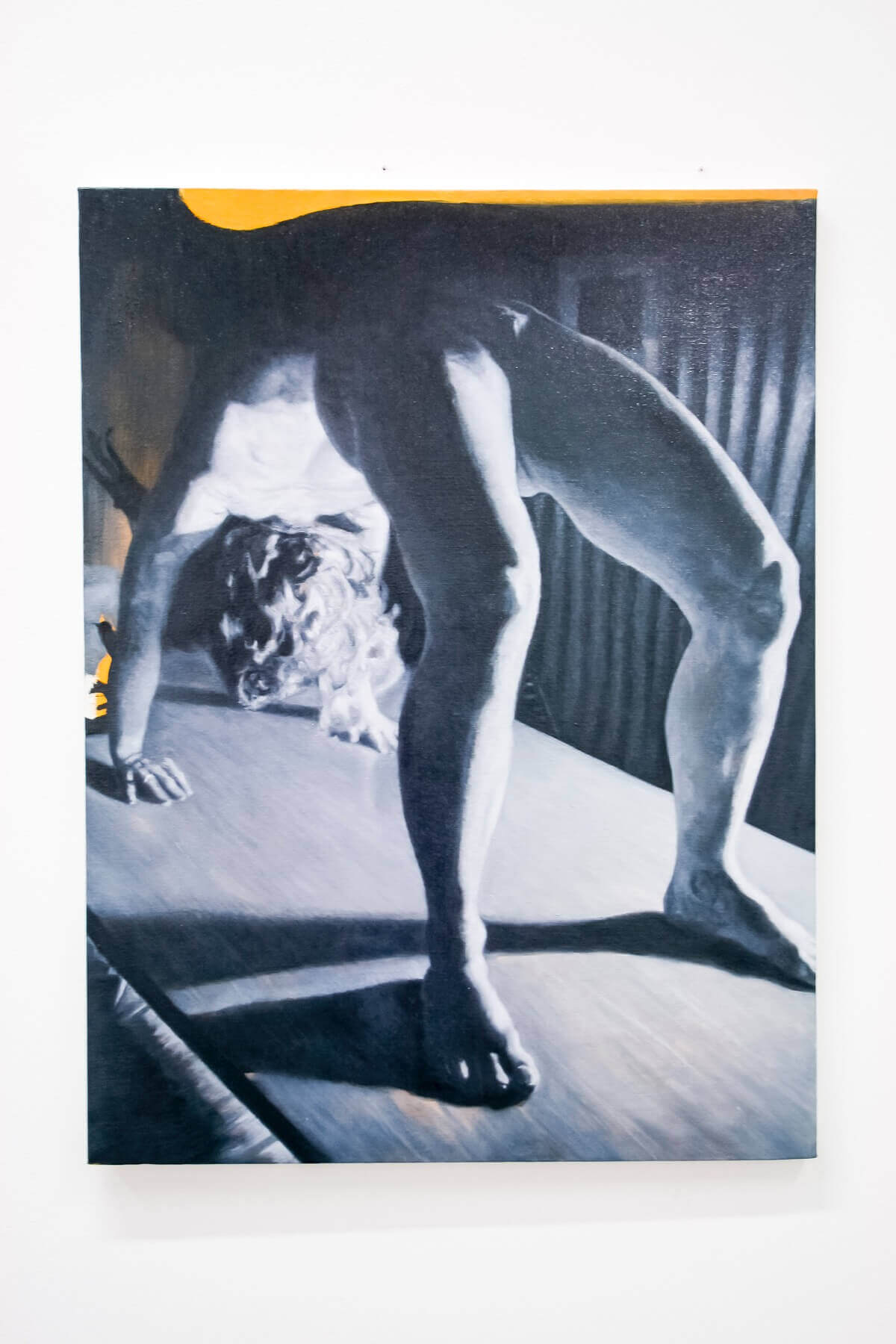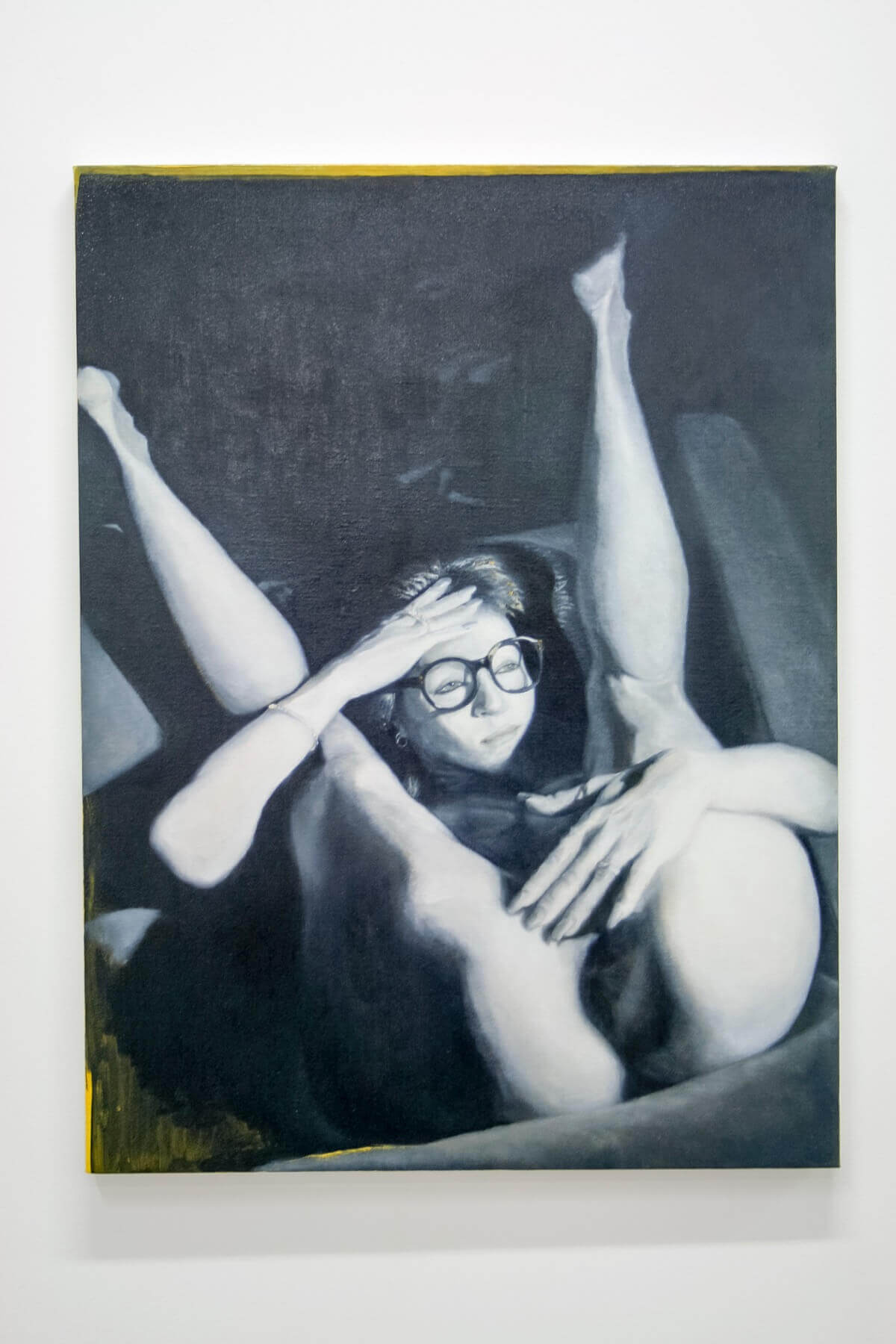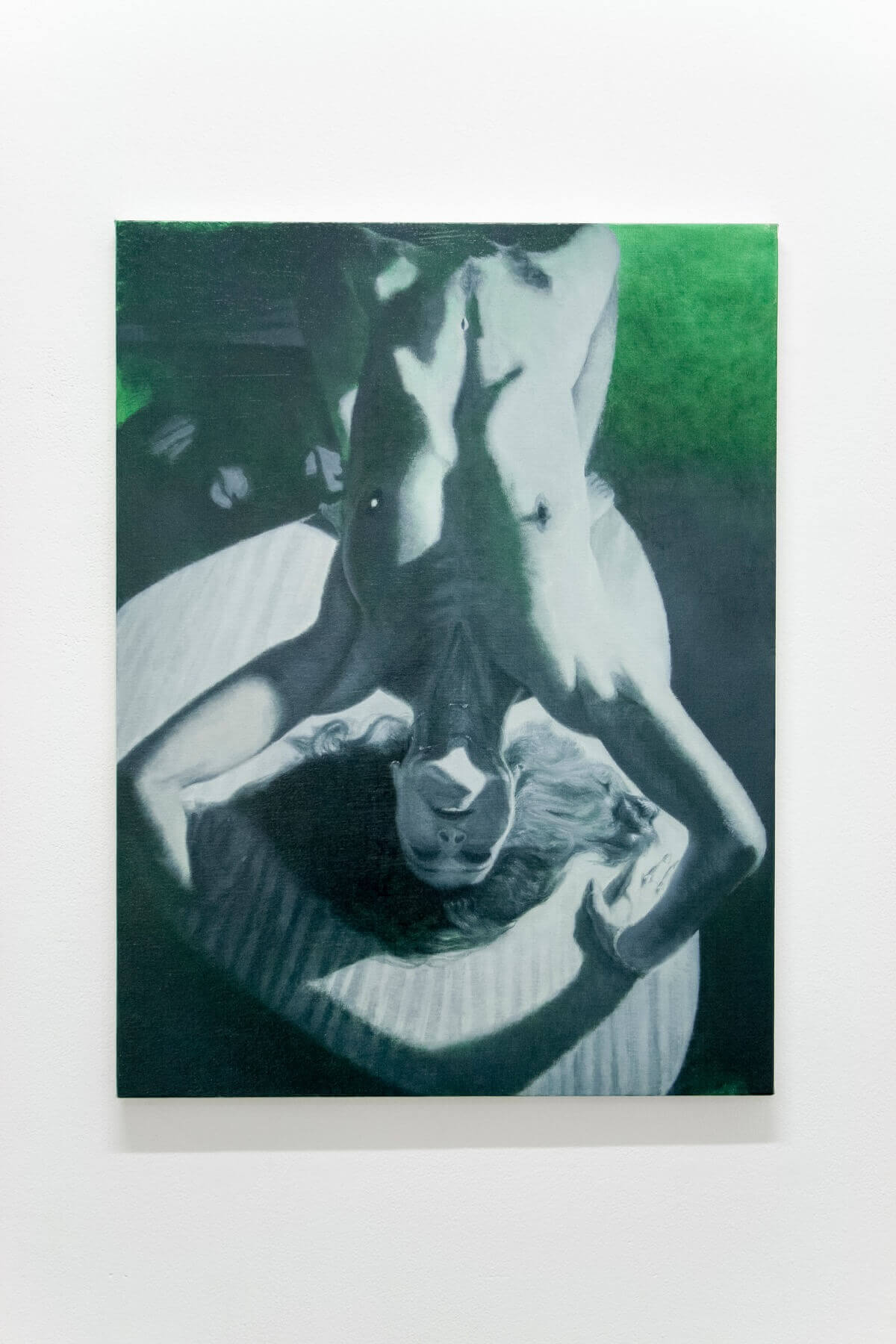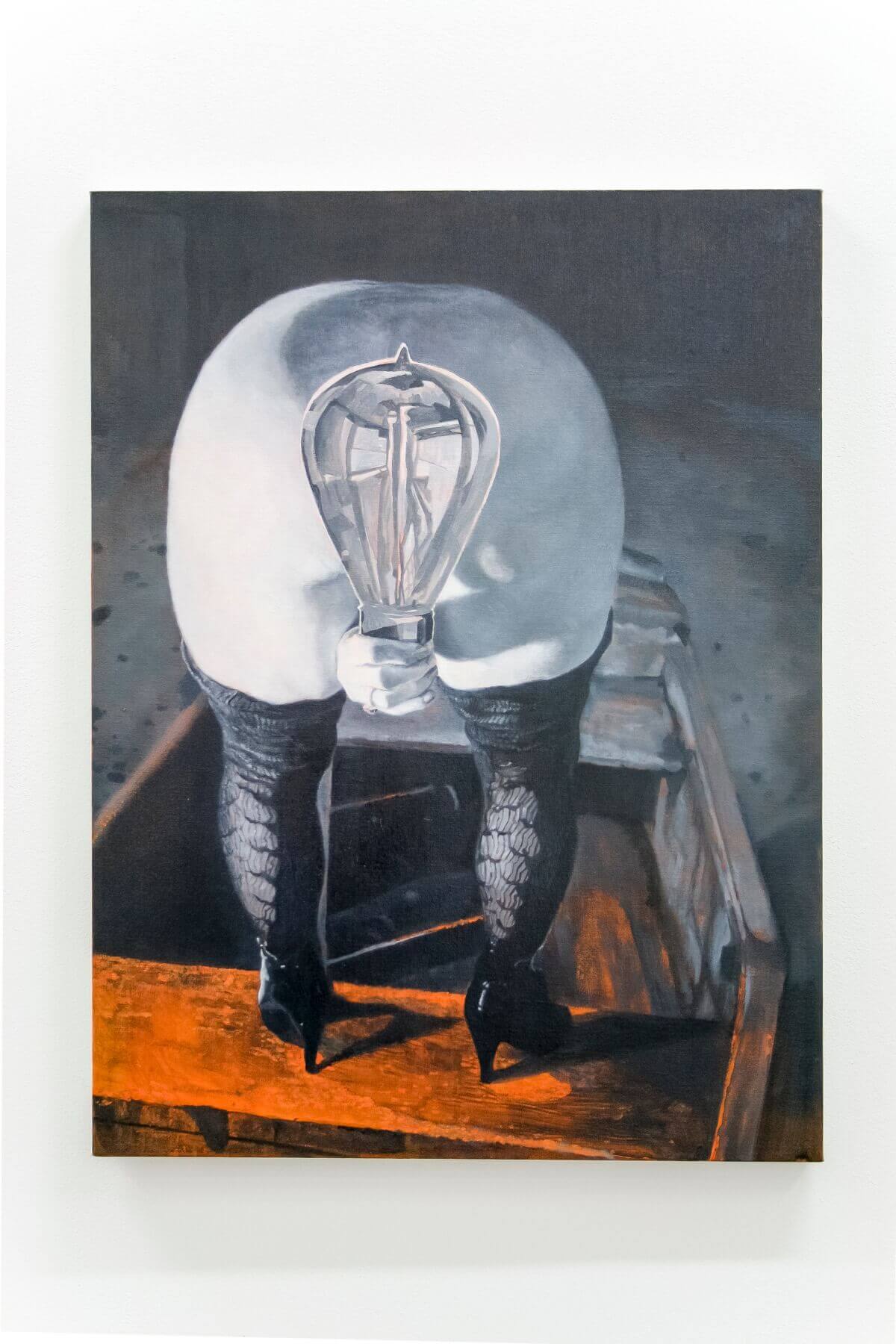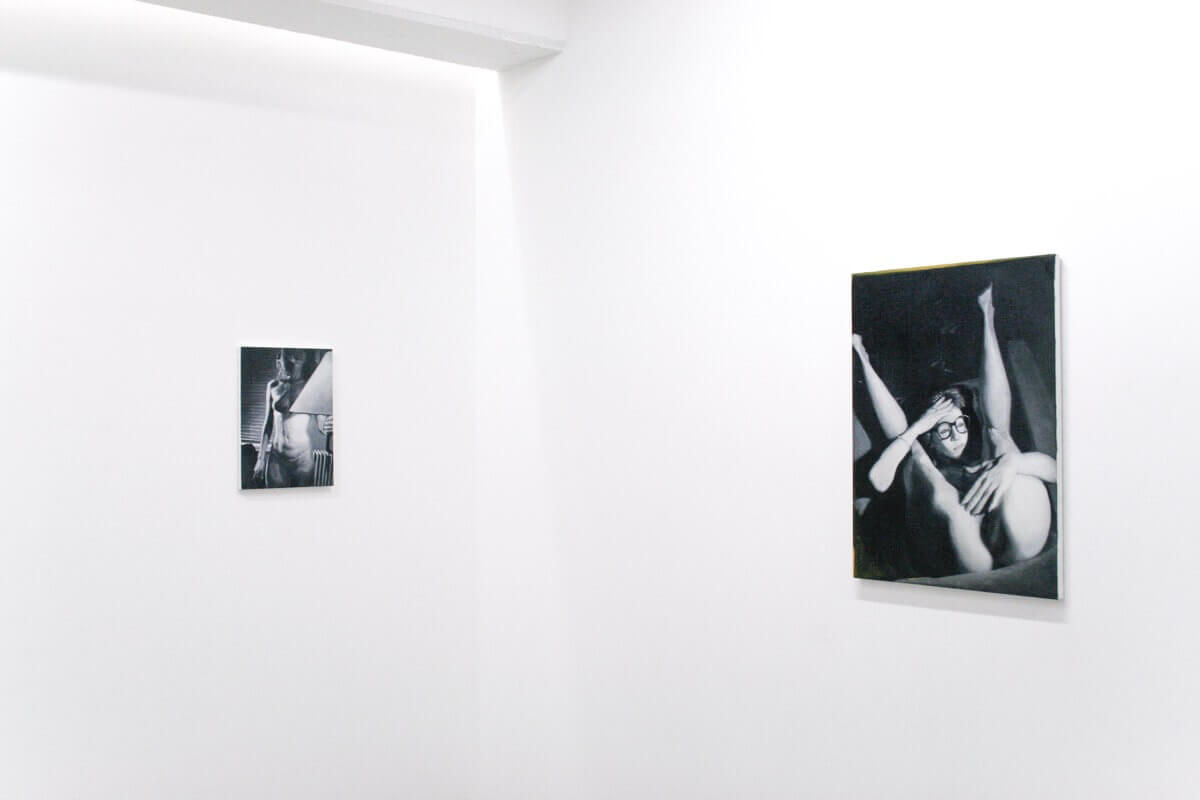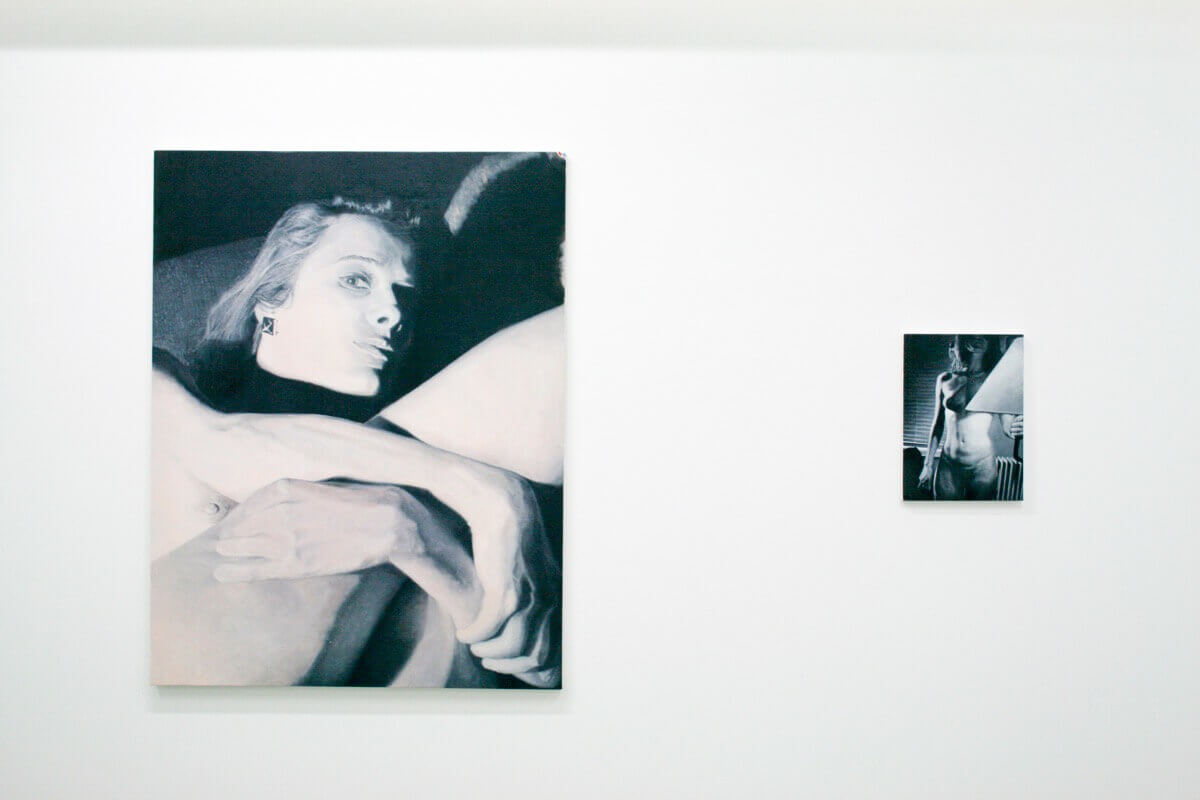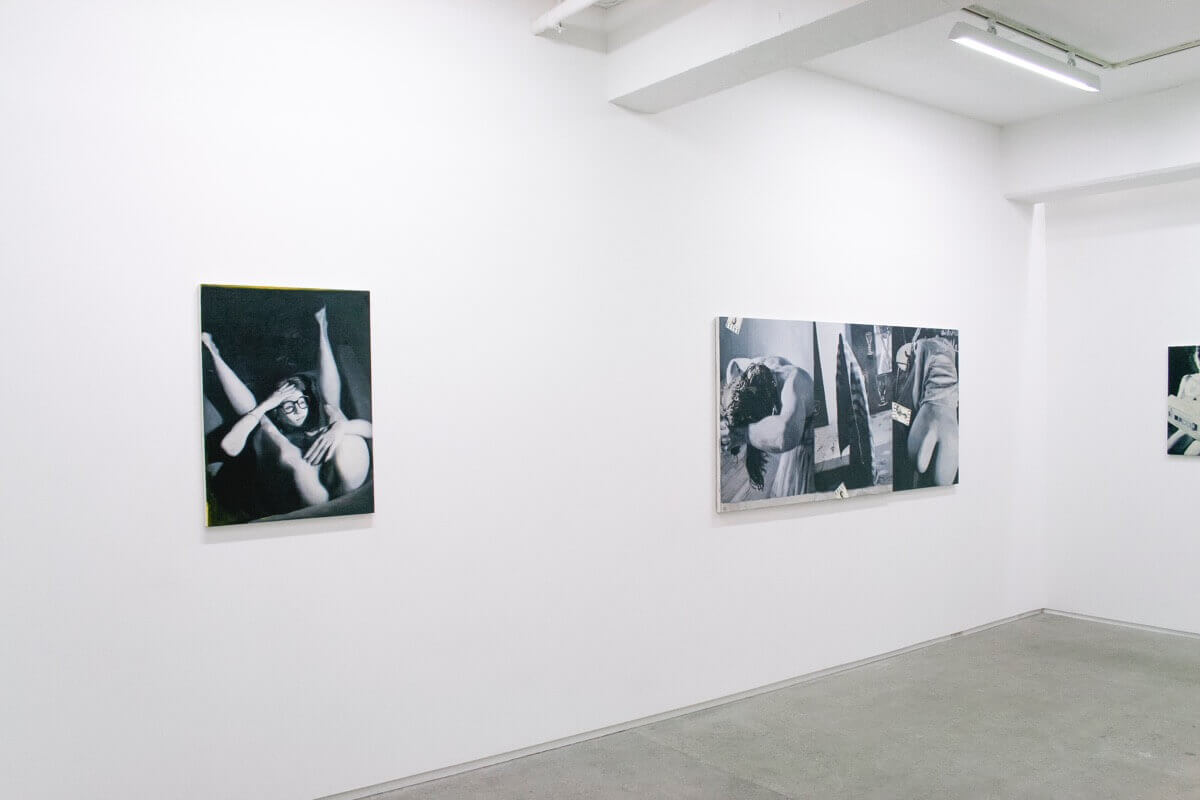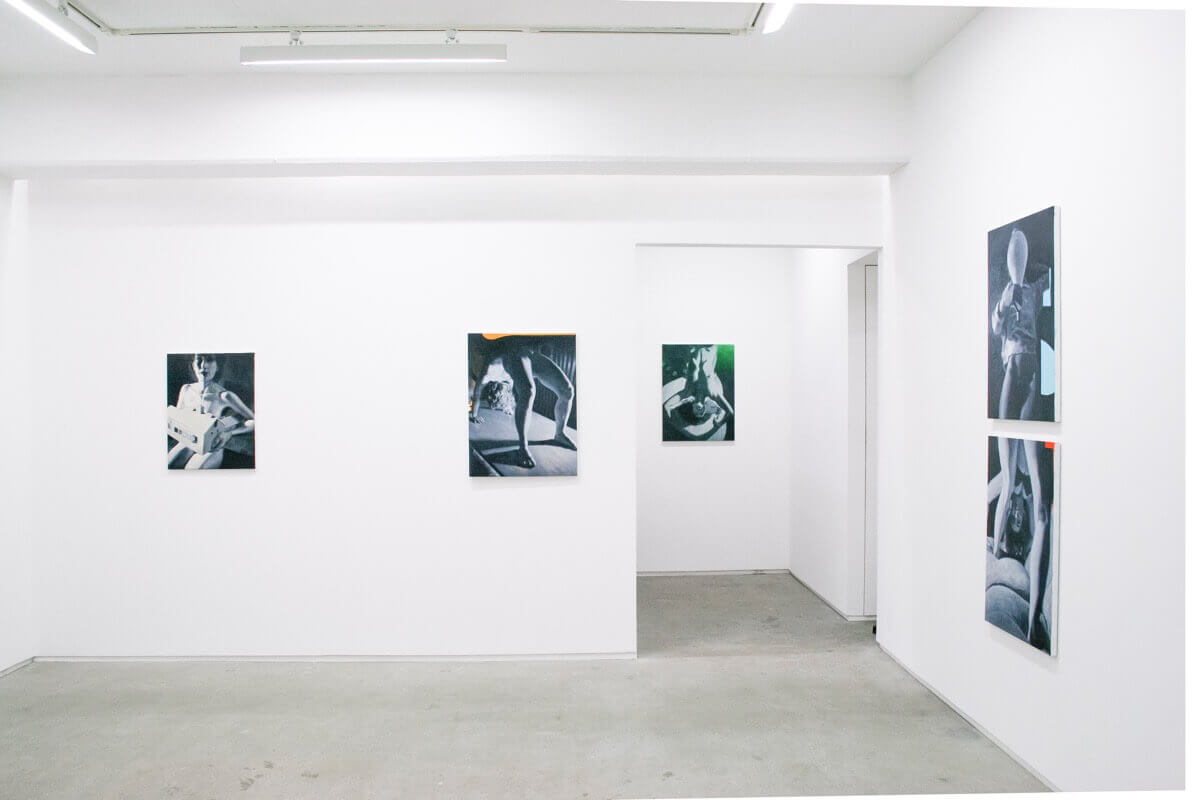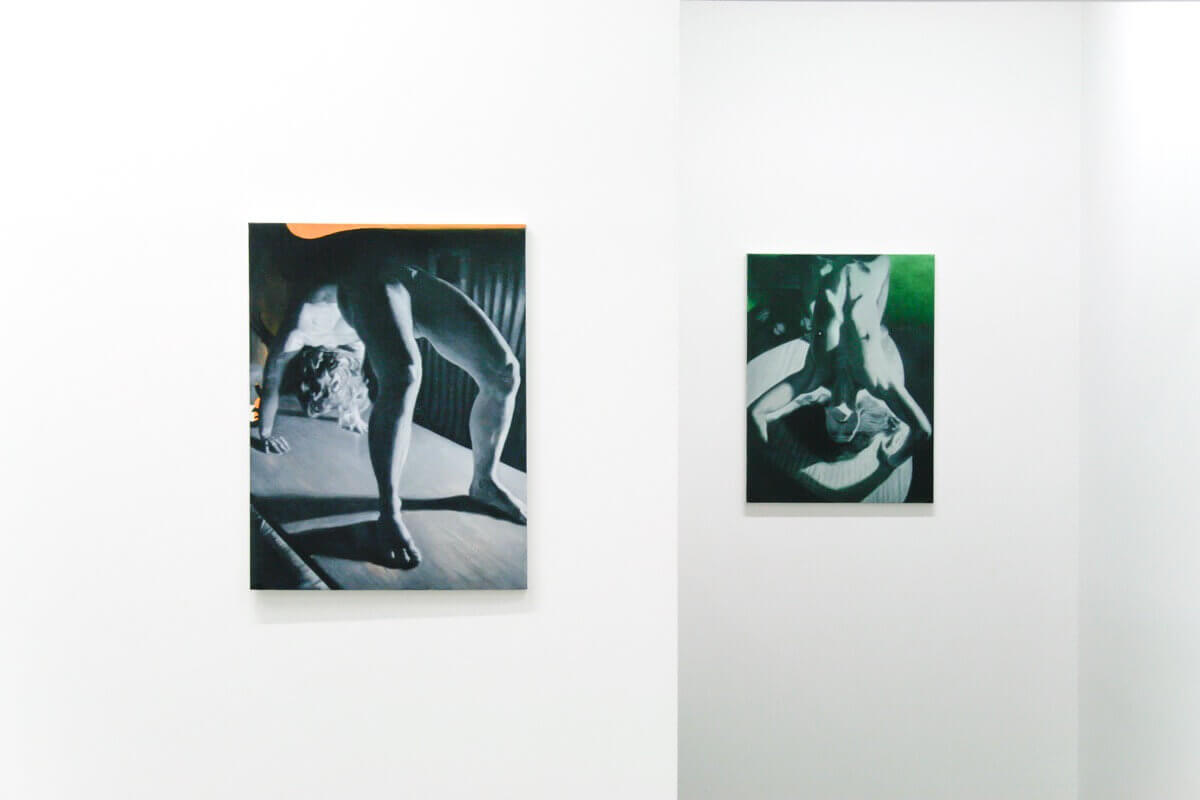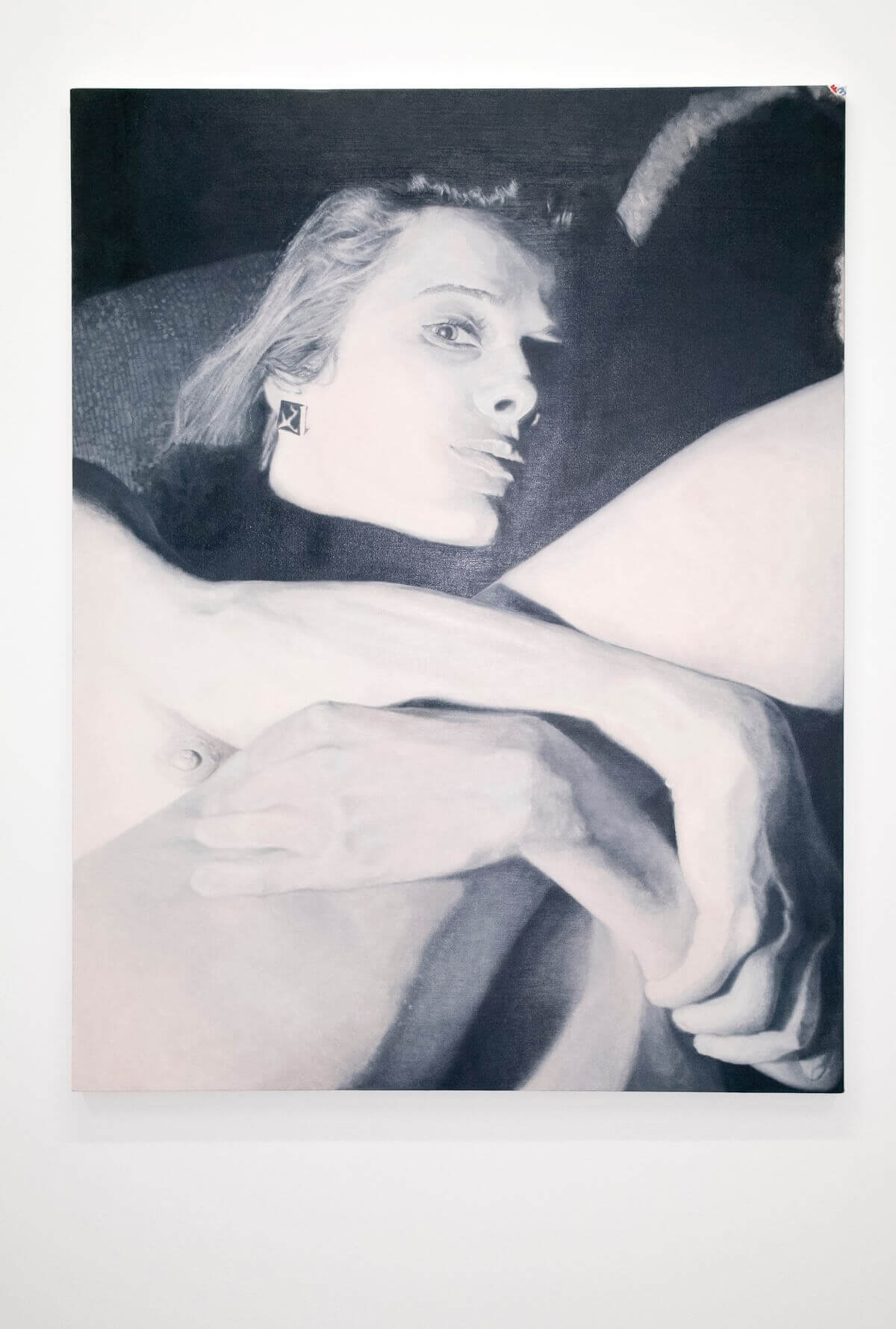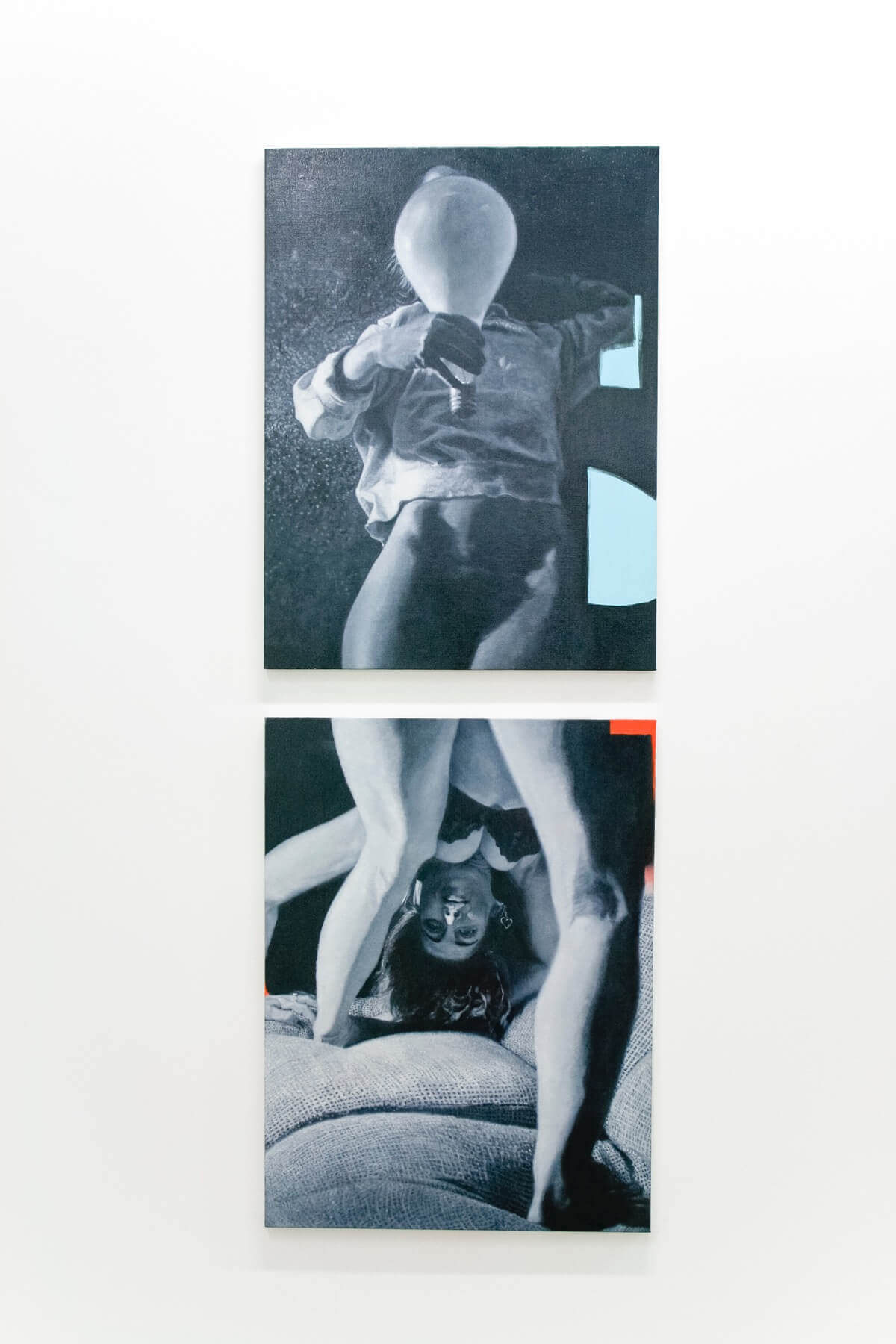FM “REISSUED WOMEN” AN HOMAGE TO DAVID SALLE

June 11-July 23, 2011
*最終週(7/19-7/23)はアポイント制となりますのでご注意ください。
Appointment only for the last week(July 19-23)
ここに一冊の奇妙な写真集がある。
モノクロームで、66ページほぼ全編女性のヌード。50〜60年代のアメリカのモーテルのように設えられた室内で、被写体は、恐らくあまり有名ではない女優かモデル。彼女たちは、不自然なまでにアクロバティックなポーズをさせられているが、表情は広告写真のようで、全くポーズと合っていない。そうかと思えば、大きな電球や、電球のドローイングを切り抜いたような、よく解らないものを手に持たされていたり、だからといってまったくエロティックでないかと言えば、そうではない。強いコントラストを舐め溶かすように、被写界深度は浅く、トーンは柔らかい。暈けたシャドウは肉体の抑揚をミステリアスに包んでいる。
1980年代前半。ニューヨーク、イタリア、ドイツのアートシーンを熱狂させた、いわゆる「新表現主義=ニュー・ペインティング」ブーム。日本でも、大竹伸朗が頭角を現し、また、当時グラフィック・デザイナーであった横尾忠則が、一転「画家宣言」をするなど、大きなインパクトを持って迎えられた。
この『DAVID SALLE : Photographs』という写真集は ジュリアン・シュナーベルやジャン=ミシェル・バスキアと並ぶこの時代のニューヨークを代表するペインター、デヴィッド・サーレによって、1980年から10年間に渡り撮影され、1991年に出版された。
サーレの当時の一連の絵画作品と、この写真集からは、アメリカのモダニズムと、フランシス・ピカビア、この二つのテーマの脱構築というコンテクストが浮かび上がってくる。実際前述の電球のドローイングは、ピカビアからの直接的な引用であり(さらに本物の電球を持ち込んだところはサーレの心憎い遊び心の現れだろう。)そして奇妙なライティングは、ピカビアの絵画の再現を意図したものであることは想像に難くない。
そして、エモーションの復権こそが、その合い言葉だった「新表現主義」の只中にあって、「アプロプリエーション」という、その後90年代になって「新表現主義」から主役の座を奪う次の時代のコンテクストの萌芽が、すでにこの時期のサーレ作品に見て取れることは何よりも興味深い。
これらの写真は、そのユニークさ故に、独立した写真作品として発表されているが、10年間という撮影期間は、ひとつのシリーズに掛ける時間としてはあまりに長すぎる。やはりペインティングのエスキースにすることが目的で撮影されたと推測すべきだろう。実際いくつかのカットはペインティングになったものの、その多くは写真集に閉じ込められたまま、その後より複雑化するアート・コンテクストの奔流で、いつしか多くの人が意識する存在ではなくなっていった気がする。
それから20年。
極東の島国で、二人の若きアーティストがこの未遂のエスキースの存在に気が付いた。
FMという名義で活動する、F(a.k.a.福永大介)とM(a.k.a.松原壮志朗)からなるアーティスト・ユニット。二人はこれまで、それぞれ個別の活動の中で、すでに独自の世界観を構築している。そして1981年と1980年生まれという、実体験としては「新表現主義」を知らない世代でもある。
しかしFMは、かつて彼らのアイドルであったサーレが残した未遂のエスキースを、新たなペインティングとして、自分たちの手で再構築することの意義を、瞬時にして感じ取った。
常に日本的であることを強要する、多文化主義の見えざる魔手から逃れつつ、出口の見えないポストモダンを突き抜けるために、彼らが選んだのは、あえて愚直なまでに再現するという、最もリスキーな方法だった。モノクロームの階調は滑らかで大胆に、オイルの作り出すマチエールは、(言うまでもなく写真には無い)僅かな筆致を残しながら淡く光沢を湛え、彼女たちは次第に濃密なアウラを放っていく。そしてカラーフィールドはサーレのそれとは違い、不意に画面に侵入し、また何処かへフェイドアウトしていく。それはもはやギミックですらない。
きりきりと弓を絞るように、 押さえがたい「熱い、虚無」とでも呼ぶべき、どこか矛盾した情動が、 この二人を突き動かしている。
---
There is a strange collection of photographs right here. The photographs were taken in monochrome and most 66 pages of the collection contains female nudes, taken in a place where may well be read as a fifties or sixties motel room. These women might be minor actresses or models. They are forced to do unnatural acrobatic poses yet their face expresses nothing like advertising photograph, so they don’t match at all. Looking their hands, one holds a building model or a flatly painted cutout of a large light bulb. But I wouldn’t say that’s not at all erotic. The shallow depth of filed and the soft tone create a fizzy shadows which are mysteriously covering the line of their flesh.
In the early1980s, Neo-expressionism dominated the art scene in New York, Italy and Germany. In Japan, Shinro Ohtake emerged then Tadanori Yokoo retired from commercial work and took up painting causing a big impact. This photo collection titled “DAVID SALLE : Photographs” was published in 1991 by David Salle, a contemporary painter in New York with Julian Schnebel and Jean-Michel Basquiat . The photographs had been taken over a decade from 1980.
From Salle’s paintings and this collection of photographs, we can read a context of deconstruction of two themes: American modernism and Francis Picabia. In fact, a cutout of a large light bulb is directory quoted from Picabia’s drawing. (Salle here plays with a real light bulb in his photo book, though)
The strange composition and lighting remind us Picabia’s paintings. It is interesting that a sprout of the context coming up in 90s, “appropriation” can be seen already in Salle’s 80s paintings still in the period of Neo-expressionism, which emphasized resurrection of the emotion.
Although these photographs had been separately presented as an individual work , it seems that a10-year period of shooting was too long for a series. It is reasonable to presume that these photographs were taken for esquisse. Some of them were painted by Salle but the most were still trapped in the collection; Art contexts have became more complex after that period. In that torent, the existence of the series has become out side of many people’s mind, considering.
20 years later. In the Far East Island, two young artists, Daisuke Fukunaga and Soshiro Matsunaga, acting in the name of FM, found the book. They have been building their career in a separate activity. Born in 1980 and 1981, they don’t know Neo-expressionism on time. FM, however, immediately sensed the importance of rebuilding these esquisses as new paintings. Escaping from the invisible clutch of multiculturalism that always insists Japonism or even beyond the way out less post-modernism, FM choose the most risky way: intentionally reproducing the pictures. The gradation of the monochrome was smoothly revived and its matière produced by the painting (not in photographs, of course) radiates a faint sheen leaving some small strokes then the models gradually revive their aura in their canvas. The color field, different from Salle's, suddenly invades the canvas and fades out somewhere. It is no longer gimmick as it was in Salle's photographs but almost insignificance. The contradictory impulse such as “passionate emptiness” stimulates them.

